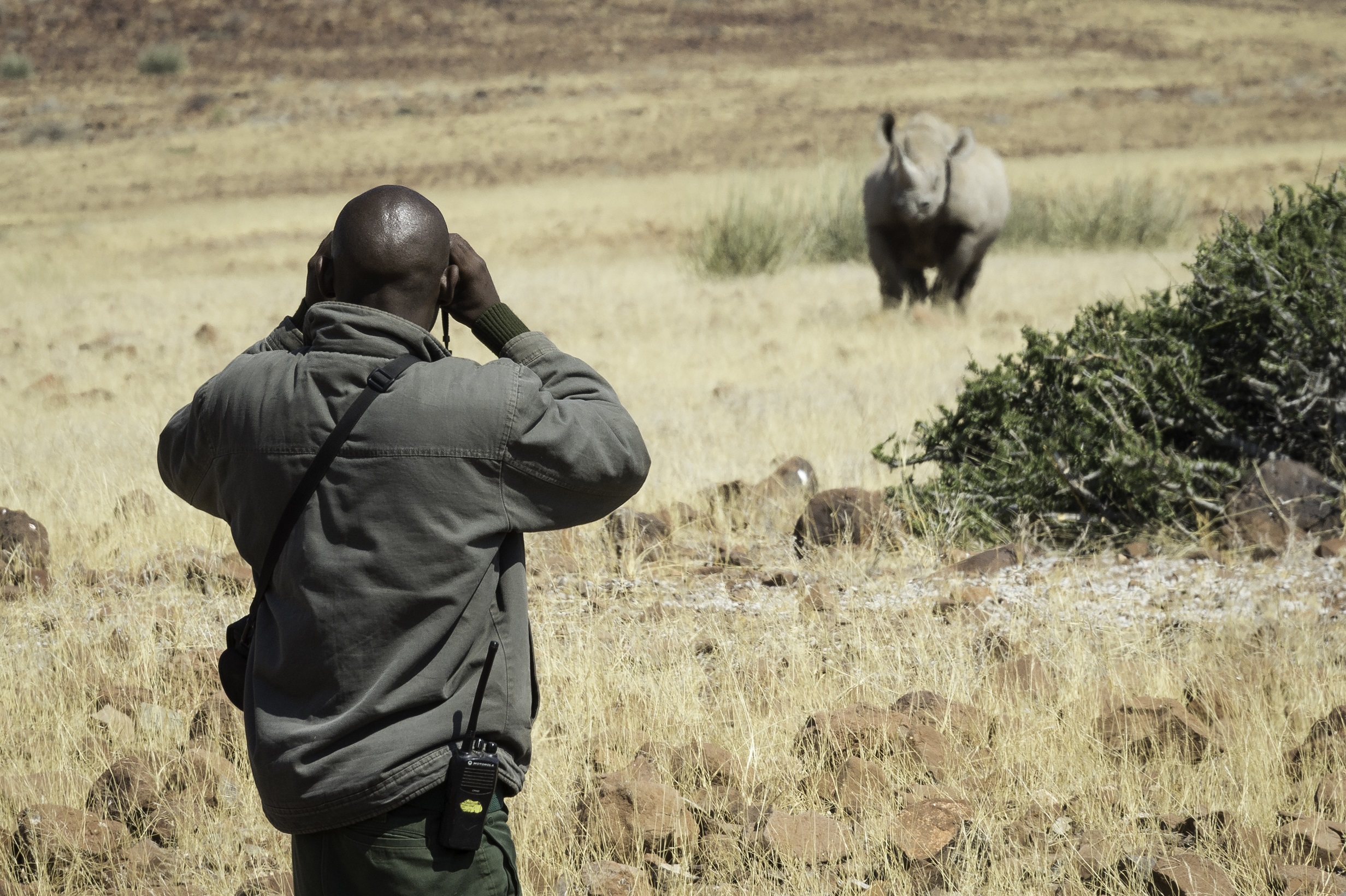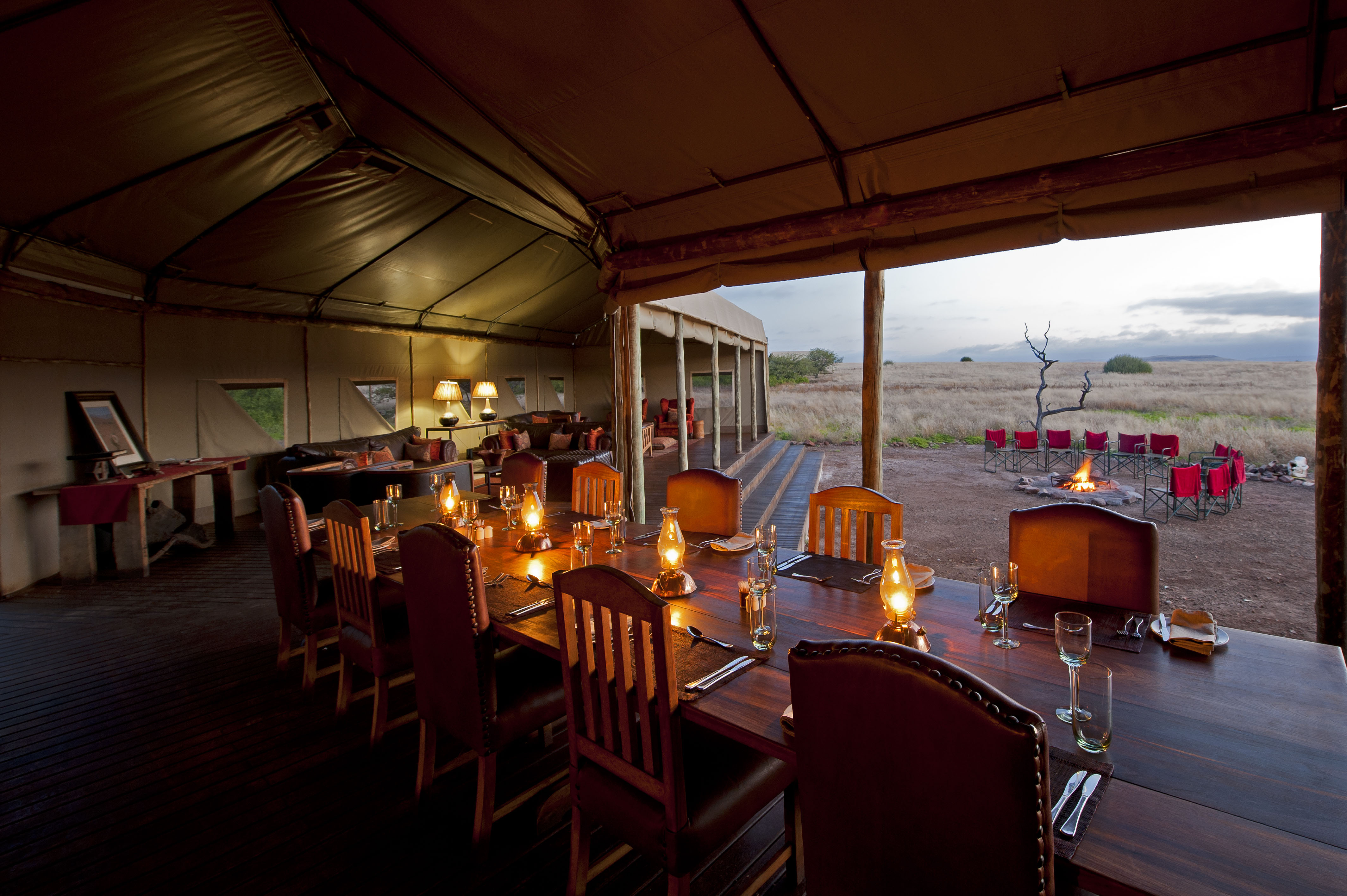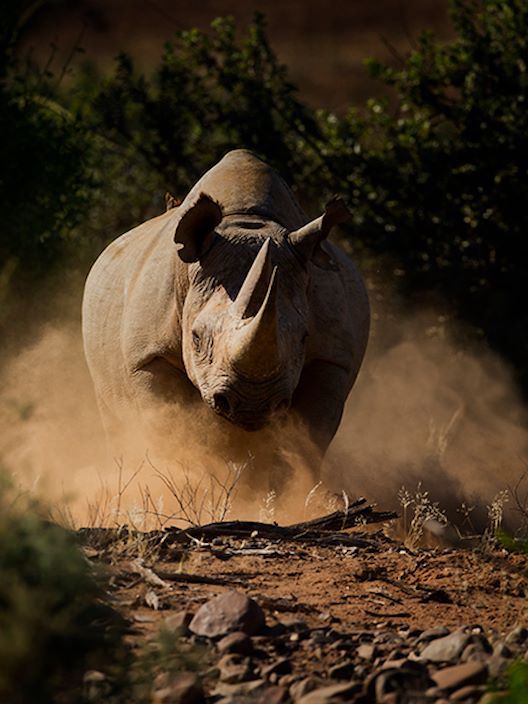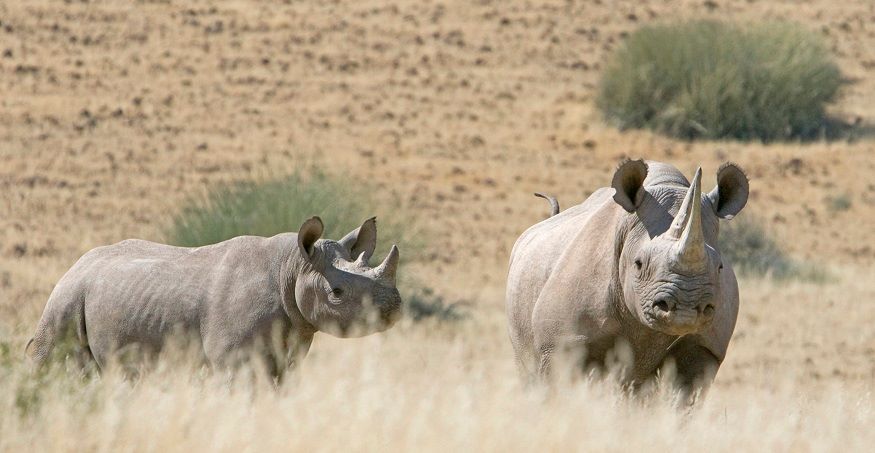Situated within the 580,000-hectare Palmwag Concession, Desert Rhino Camp is the result of an impactful partnership between Wilderness, SRT and the neighbouring Anabeb, Sesfontein and Torra conservancies. The science-based protocols and rhino messaging model designed at DRC by Wilderness and SRT served as the basis for future rhino tourism expansion in the region. By providing an unrivalled training ground for Conservancy Rhino Rangers and ensuring that strong contractual agreements were put in place between the partners from the onset, this tourism product was intentionally designed to start tackling species conservation directly.
This study looked to provide concrete evidence of the benefits provided by conservation tourism, and found that income from rhino tourism directly demonstrated increased investment in rhino protection by conservancies. The study began by analysing data collected from the community conservancies for a six-year period, between 2012 and 2018. The results suggest that “communities that benefited more from rhinoceros-based tourism demonstrated higher levels of stewardship”. To illustrate this point, the study was able to show that as the rhino tourism revenue to the conservancy increased, so too did the employment of new Conservancy Rhino Rangers.

The second part of the study looked at whether this investment resulted in any impact outcomes in terms of protecting this vulnerable species. Here the data showed that “a strong negative relationship observed between rates of illegal hunting of the rhinoceros population and the level of local rhinoceros protection efforts suggest that the increase in local stewardship likely contributed to the reduction in illegal hunting”.
“Among the many key findings of the study, a critical element worth highlighting is the agency that these communities have to invest their income where they see fit. In this case, an excellent decision has been made to invest into the training of community members and the protection of the species and environment that keeps this conservation economy working”, noted Vince Shacks, Wilderness Group Impact Manager.

“Since opening DRC in 2003, we have been committed to our partnership with SRT and the local communities. The camp serves as a base for one of SRT’s tracking and monitoring teams, with the operational costs covered by Wilderness. SRT is responsible for leading all rhino tracking and monitoring activities, while ensuring monitoring and threat data are collected, processed and secured. In addition to contributing towards the largest, longest-running black rhino database in the world, the partnership has also enabled SRT to successfully increase its monitoring range by 20% – at zero extra cost to the organisation”, said Wilderness Chief Operations Officer, Alexandra Margull.
By visiting DRC, each guest makes a significant contribution to the protection of this Critically Endangered species. As part of the lease agreement, the company provides financial remuneration and employment opportunities to the conservancies, positively uplifting the local communities. Approximately 11% of the total DRC revenue is shared between the conservancies, SRT and rhino fundraising support. This contribution exceeds the total sustainable profit made by the camp in the last five years.
“As we celebrate our 20-year anniversary of this conservation coalition, this study provides critical evidence of how multiple stakeholders can come together and design a conservation tourism offering that is able to ensure the protection of an iconic but Critically Endangered species. It also validates how vitally important these types of partnerships currently are, and will continue to be, for species and habitat protection in Africa”, Vince concluded.




